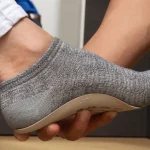The expiration of apparel quotas for WTO member countries at the end of this year is prompting an outcry by members of Congress and a new international coalition of textile and apparel industries and labor associations from 45 countries. The problem is that many of the countries now complaining were once looking to benefit from the phase-out of quotas and the U.S. trade groups and their Congressional partners see little support from an American consumer that appears to care less each year about the “Made in U.S.A.” label.
At issue is a 10-year-old global agreement that developing countries pushed for in the early nineties to gradually phase out the global quota system on textiles and garments by January 1, 2005. It is not so much the agreement that is now worrisome to the countries in question, it is the fact that China now part of the WTO and will see the same benefit as many other countries such as Turkey, Bangladesh, and Mexico that had hoped to capture larger chunks of the U.S and European textile manufacturing pie.
Last week, separate delegations of 29 Senators and 88 House members sent letters to President Bush urging him to urge the WTO to delay the quota phase-out, citing China as the biggest threat to U.S. jobs due to “unfair trade practices to heavily subsidize its exports.” The group is looking for a three year delay in the quota elimination.
“The U.S. textile sector, still the largest manufacturing employer in the United States, stands to lose almost 650,000 jobs,” the group said in one letter to Bush. A broader group of international trade and labor groups is estimating that more than 30 million jobs will be lost worldwide. That coalition, made up of 80 different groups from more than 40 countries, issued the Istanbul Declaration, which also cites China as a major threat to world textile and apparel manufacturing economies.
The program to end the quotas was agreed to at the 1994 round of global trade talks in Uruguay known as the General Agreement on Tariffs and Trade pact. U.S. administration officials are noting that the developing nations pushed for the end of the textile quotas in that agreement.
Neither the U.S. nor the WTO has warmed up to the idea of revisiting the quota issue, and no other country has agreed to raise it at the WTO either.
“The United States intends to abide by its international obligations – that were negotiated more than a decade ago – to phase out the remaining textile and apparel quotas at the end of this year,” said Chris Padilla, spokesman for the U.S. trade representative. The agreement was developed during the Clinton administration.
Mr. Padilla noted that any WTO decision would have to be made by consensus, meaning that China, India and other nations would have to accede.
The Congressional delegations, headed by a number of House members and Senators from textile-producing states, said that China was on the edge of establishing a textile and apparel trade monopoly, assisted by the Chinese government through unfair trade practices including currency manipulation, direct state subsidies, the widespread use of nonperforming loans, and export tax rebates. Presidential hopeful John Kerry got on board the train as well.
The trade groups citing studies that indicate that Chinese export of product jumped 830% since 2001 in the 29 apparel categories where China is exempt for textile quotas and Chinas share of the U.S. market for those products increased to 65% of total sales at the end of Q1 from just 9 at the beginning of 2002.
Critics of the trade groups actions point to the fact that everyone has had ten years to prepare for the change and that delaying the quota cut would mean higher consumer prices for apparel and textile products.
While some segments of the U.S. consumer base warm to these issues when it comes to American jobs, they appear to be less concerned each year with goods manufactured overseas.
A recent study sponsored by Marketing Support, Inc. and conducted by TeleNation found that roughly 72% of those polled dont even check to see where a product was produced. The study went on to say that 57% of Americans would not be swayed from a purchase if they knew the product was made outside the U.S. This recent study, which polled 1,000 consumers in March of this year, was in sharp contrast to a Gallup poll conducted in 1994, which indicated that 84% of consumers looked for American-made goods to purchase.
The study revealed a real generational divide in attitudes toward imparted goods, with only 15% of those polled in the 18 to 24 age group saying they would be likely to purchase a product if they knew it was made in the U.S. For those aged 55 to 64, roughly 44% stated that knowing a product made in the U.S. would positively affect their buying decision.
Among those with a high-school diploma or less, 51% stated that they took the country of origin into account, but only 30% of those with post-graduate degrees stated they did so.
>>> Apparently, the more educated are more apathetic. But then again, they arent running for office either















